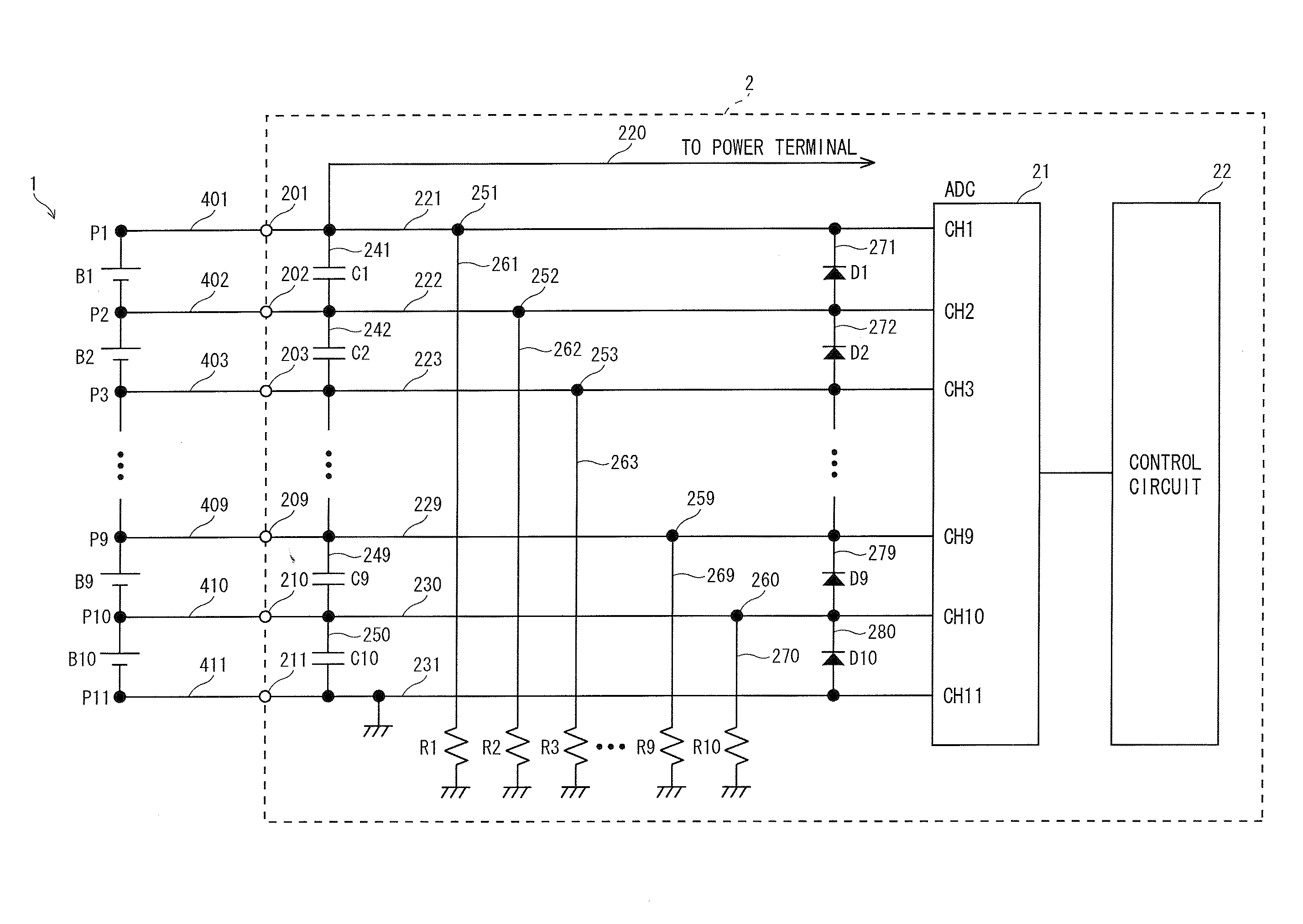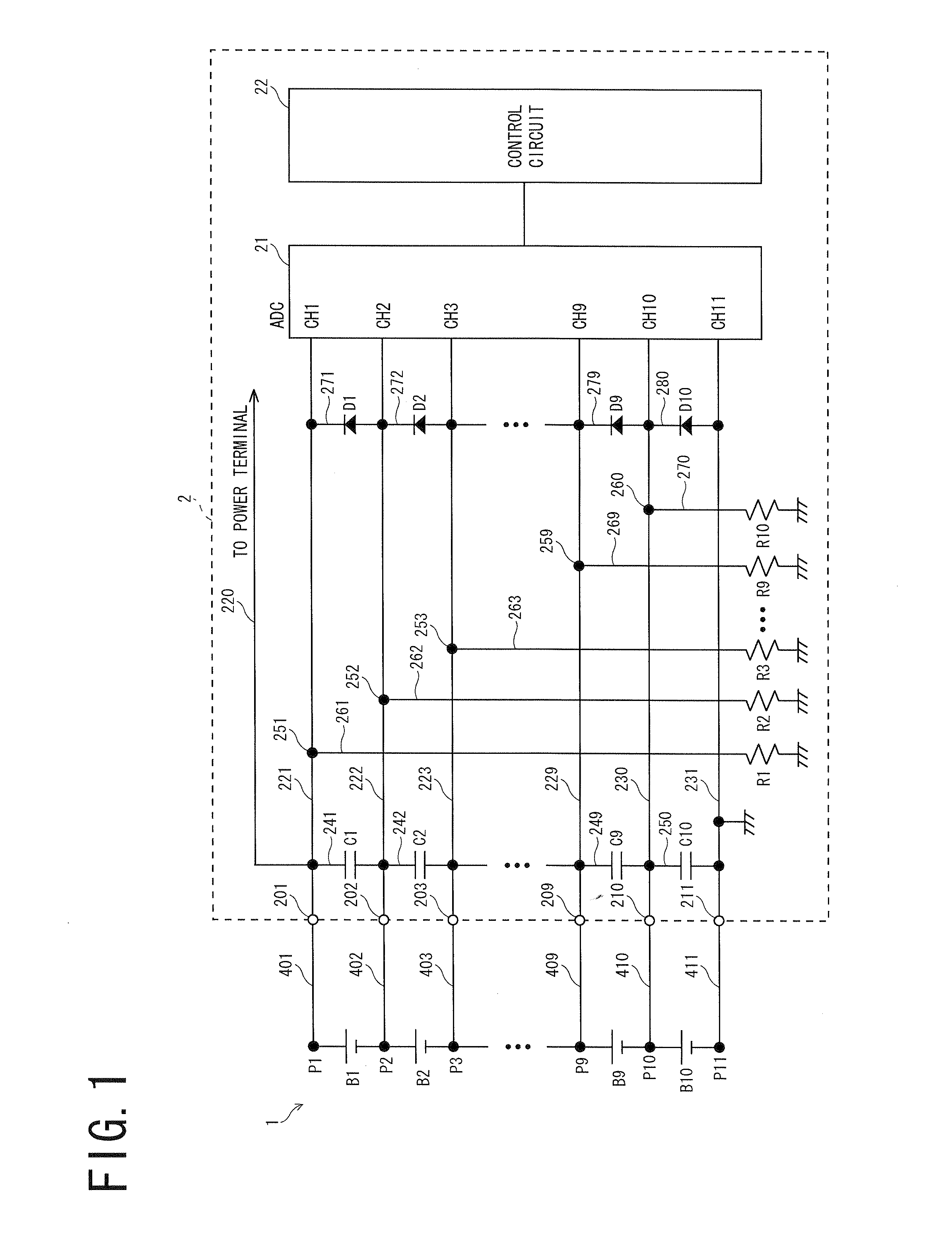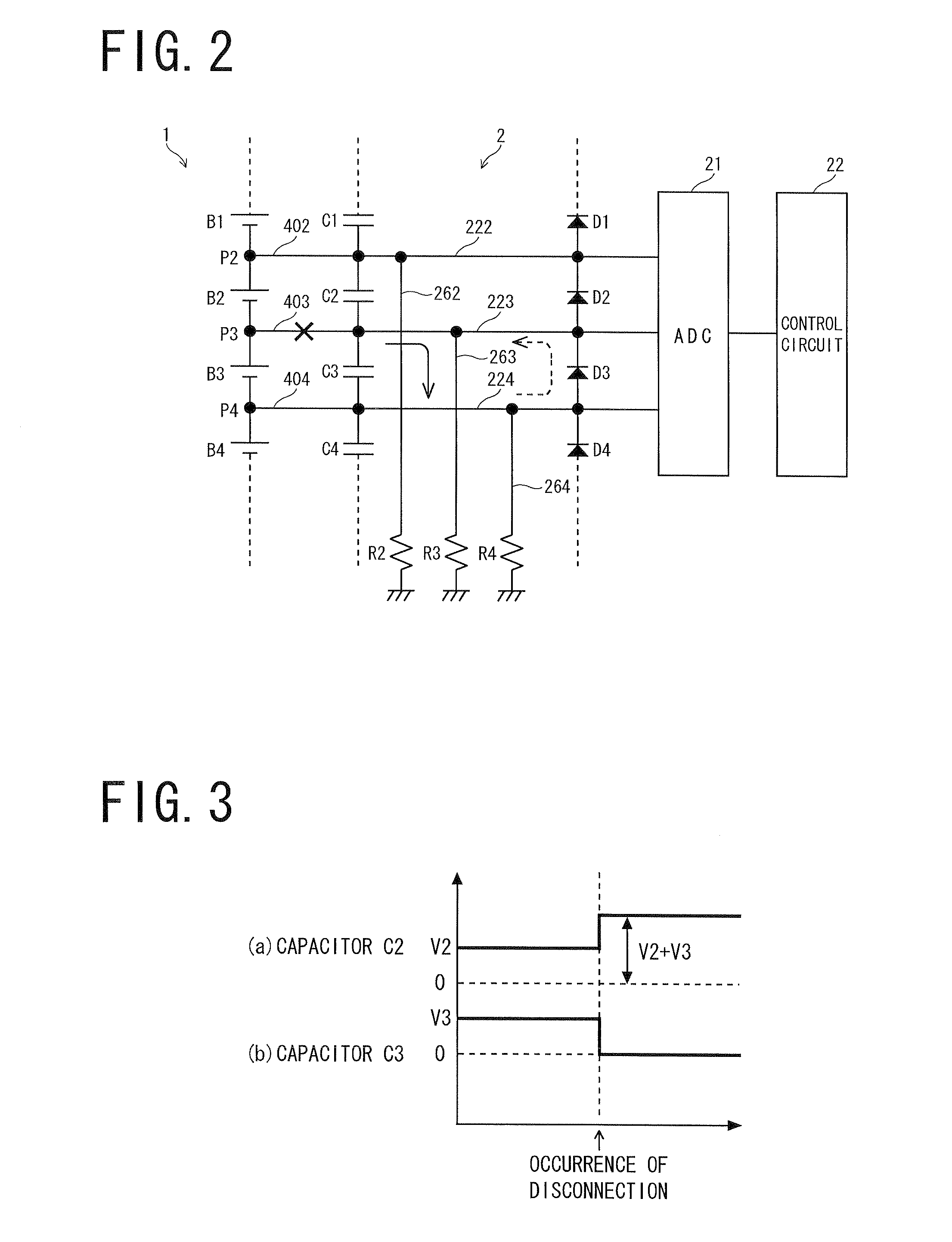Voltage Detecting Device Of Assembled Battery And Assembled Battery System Comprising Same
a technology of voltage detection device and battery system, which is applied in the direction of batteries, instruments, transportation and packaging, etc., can solve the problems of inaccurate voltage detection of voltage across each cell, disconnection is erroneously determined, smoke emission or ignition may occur, etc., to prevent the occurrence of disconnection
- Summary
- Abstract
- Description
- Claims
- Application Information
AI Technical Summary
Benefits of technology
Problems solved by technology
Method used
Image
Examples
first embodiment
[0099]As shown in FIG. 1, a battery system according to a first embodiment comprises an assembled battery 1 comprising 10 lithium-ion secondary cells connected to each other in series, and a voltage detecting device 2 detecting the voltage across each of the cells. The assembled battery 1 has a positive electrode point P1, connecting points P2 to P10 between the cells, and a negative electrode point P11. The points P1 to P11 are respectively connected to 11 voltage input terminals 201 to 211 of the voltage detecting device 2 via wire harnesses 401 to 411. A power supply line (not shown) extends from each of the positive and negative electrodes of the assembled battery 1 to be connected to a load such as a drive motor.
[0100]In the voltage detecting device 2, voltage detecting lines 221 to 231 extend from the 11 voltage input terminals 201 to 211 respectively. Capacitors C1 to C10 for protecting circuits from static electricity voltage are respectively interposed on coupling lines 241...
second embodiment
[0113]As shown in FIG. 5, a battery system of this embodiment comprises an assembled battery 1 comprising 10 lithium-ion secondary cells connected to each other in series, and a voltage detecting device 20 detecting the voltage across each of the cells in the similar manner to the first embodiment. The assembled battery 1 has a positive electrode point Pi, connecting points P2 to P10 between the cells, and a negative electrode point P11. The points P1 to P11 are respectively connected to 11 voltage input terminals 201 to 211 of the voltage detecting device 20 via wire harnesses 401 to 411. A power supply line (not shown) extends from each of the positive and negative electrodes of the assembled battery to be connected to a load such as a drive motor.
[0114]The voltage detecting device 20 has 11 voltage detecting lines 221 to 231. Current lines 281 to 290 respectively extend from the points 251 to 260 on the voltage detecting lines 221 to 230 other than the 11th voltage detecting line...
third embodiment
[0118]As shown in FIG. 6, a battery system of this embodiment comprises an assembled battery 1 comprising 10 lithium-ion secondary cells connected to each other in series, and a voltage detecting device 5 detecting the voltage across each of the cells. The assembled battery has a positive electrode point P1, connecting points P2 to P10 between the cells, and a negative electrode point P11. The points P1 to P11 are respectively connected to 11 voltage input terminals 501 to 511 of the voltage detecting device 5 via wire harnesses 401 to 411. A power supply line (not shown) extends from each of the positive and negative electrodes of the assembled battery to be connected to a load such as a drive motor.
[0119]In the voltage detecting device 5, voltage detecting lines 521 to 531 extend from the 11 voltage input terminals 501 to 511 respectively. Capacitors C1 to C10 for protecting circuits from static electricity voltage are respectively interposed on coupling lines 541 to 550 coupling ...
PUM
 Login to View More
Login to View More Abstract
Description
Claims
Application Information
 Login to View More
Login to View More - R&D
- Intellectual Property
- Life Sciences
- Materials
- Tech Scout
- Unparalleled Data Quality
- Higher Quality Content
- 60% Fewer Hallucinations
Browse by: Latest US Patents, China's latest patents, Technical Efficacy Thesaurus, Application Domain, Technology Topic, Popular Technical Reports.
© 2025 PatSnap. All rights reserved.Legal|Privacy policy|Modern Slavery Act Transparency Statement|Sitemap|About US| Contact US: help@patsnap.com



